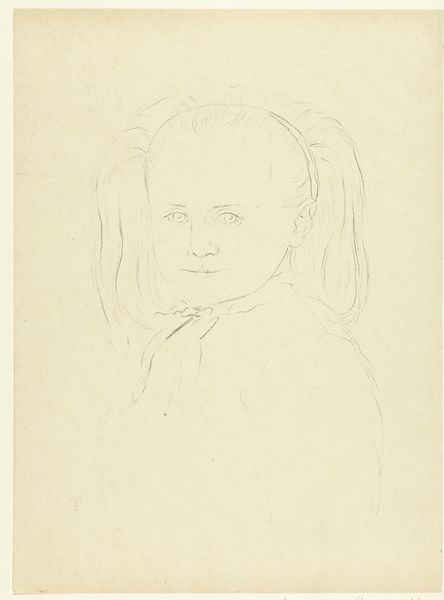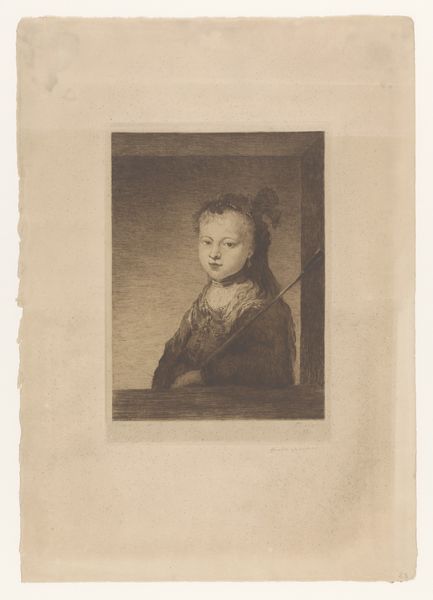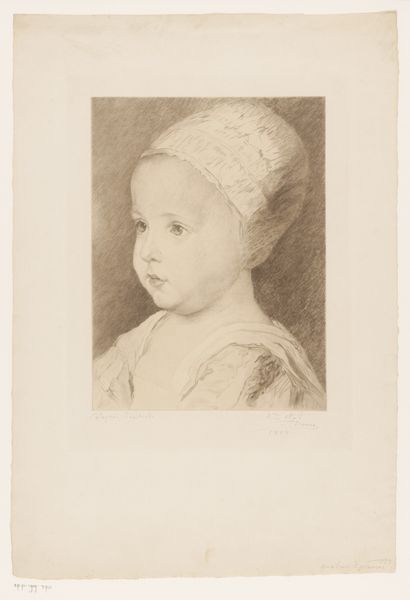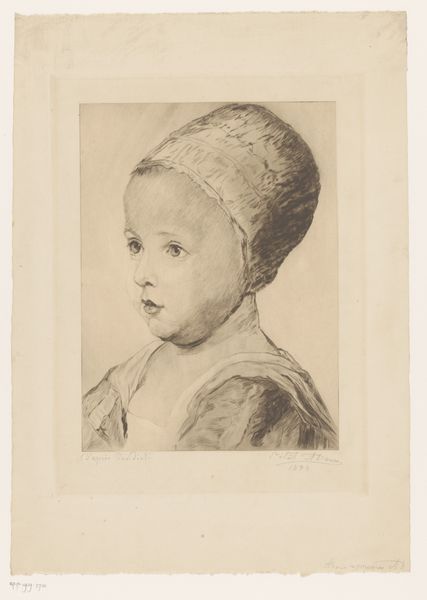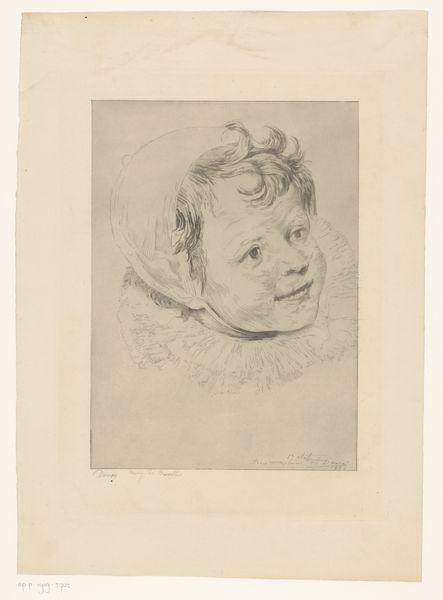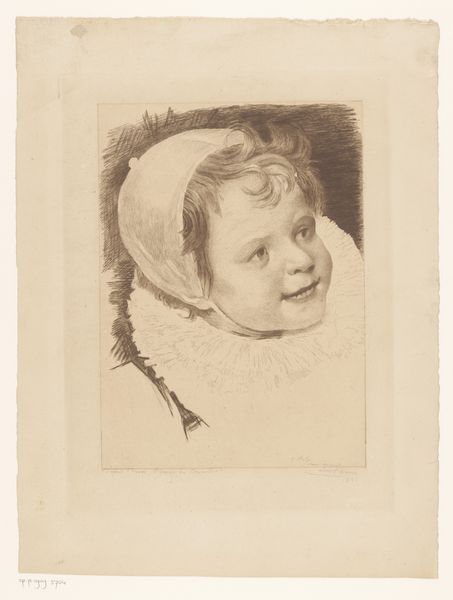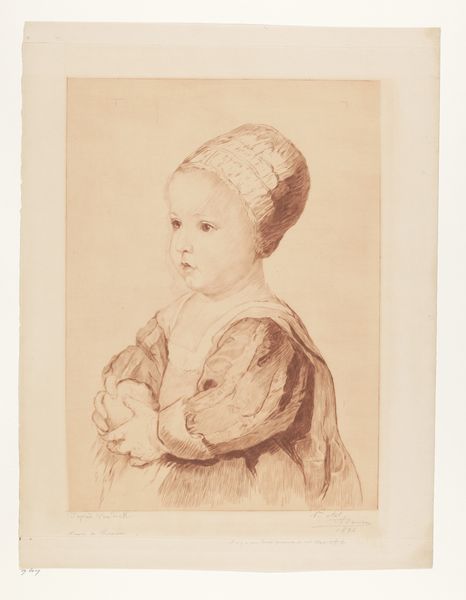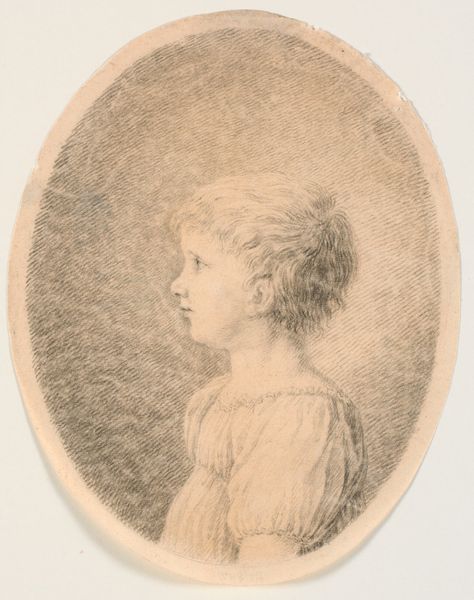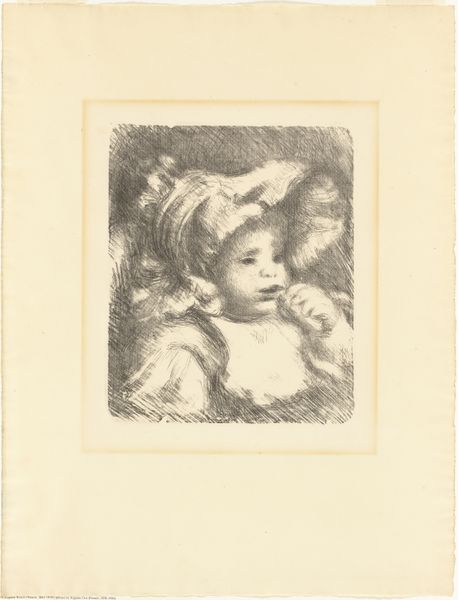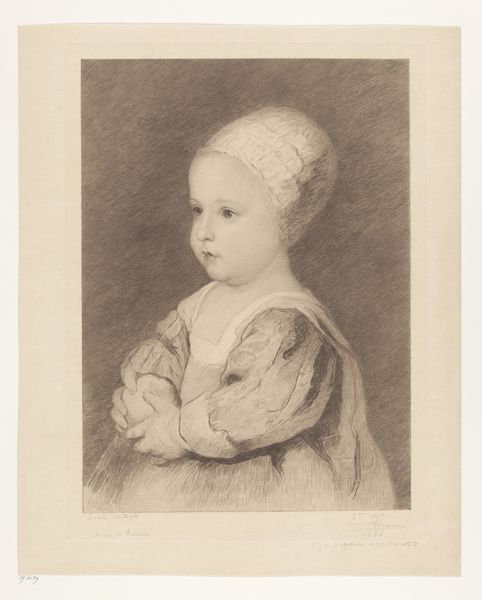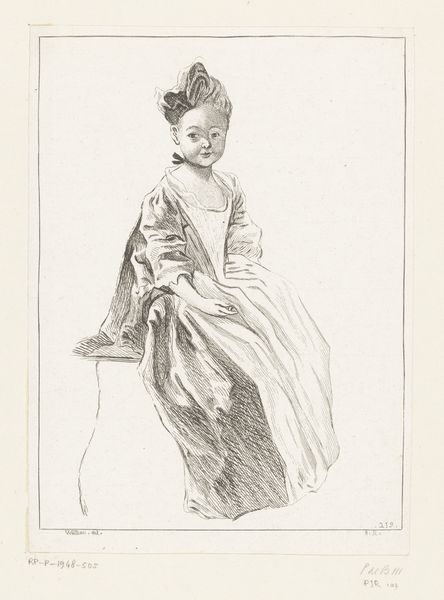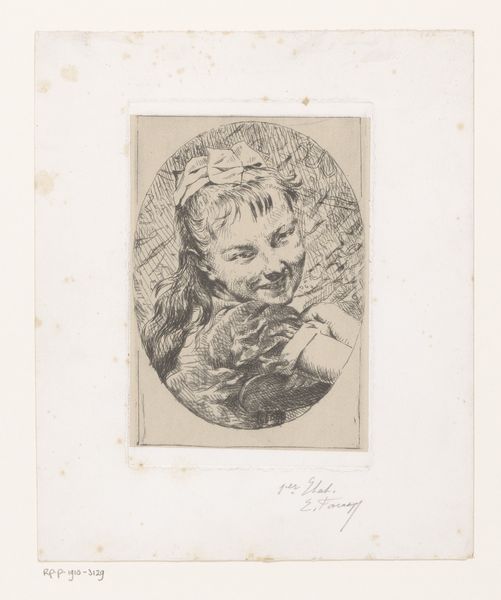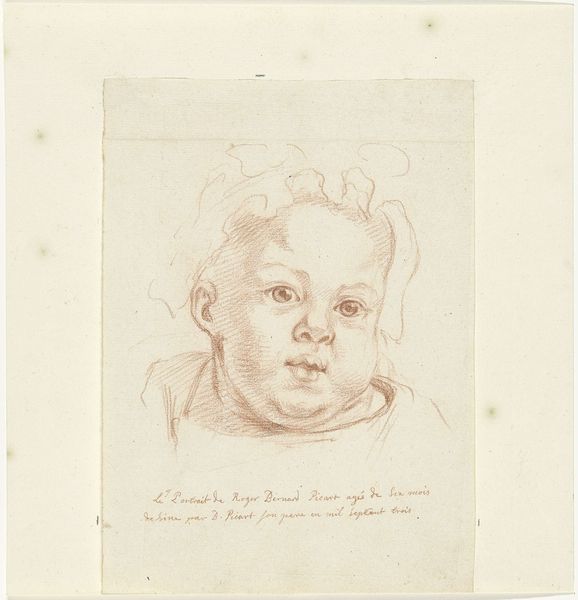
drawing, pencil
#
portrait
#
drawing
#
neoclacissism
#
caricature
#
caricature
#
pencil drawing
#
pencil
Dimensions: height 305 mm, width 230 mm
Copyright: Rijks Museum: Open Domain
Curator: Let's discuss this pencil drawing, "Portret van Albert Rubens," made sometime between 1775 and 1810 by Luigi Schiavonetti, currently residing here at the Rijksmuseum. What jumps out at you? Editor: He’s just... such a kid! But also like a tiny, serious statesman. That feathered hat and formal attire—it feels slightly satirical, as though the artist gently poked fun at the fashions of the elite. There’s a knowing twinkle in his eye, don't you think? Curator: Yes, the drawing has distinct caricature qualities, bending reality to achieve the perfect representation of class pretension in late 18th century portraiture. Notice how the pencil is employed, its soft gradations to render texture... especially the fabric. Editor: I'm drawn to the almost naive quality of the strokes – those gentle lines define youth. Is this about memorializing someone specific, or making broader statement? Curator: This is purported to be a likeness of Peter Paul Rubens’ son, Albert. Schiavonetti, known for his engravings, utilizes pencil here, emphasizing the accessibility of the medium, compared to say, oil painting. He reproduces what was likely an image only accessible to elites and makes it available to the masses. The lines also feel… lighter, suggesting movement. Editor: It feels unfinished, a ghost on paper... and yes, accessible is a great word. Looking at the details, especially how that fancy hat just sort of… sits there, and the wisps of his hair, I wonder, was this intended to show Albert himself, or was it a comment on inherited status? Curator: It certainly allows us to reflect on status and privilege, yes. How does the production and circulation of imagery reinforce social structures? Editor: Ultimately, looking at this I have questions for everyone in that room! What did Albert feel, wearing that hat? What was it like drawing someone in this era? How did this affect viewers’ relationship with power and image in that century? The materiality and Neoclassical composition seem less important, more I'm consumed by storytelling possibilities! Curator: Exactly! A relatively simple pencil drawing prompts layered questions. Consider it not just a portrait but a document embedded in social practices. Editor: And the most wonderful, thought-provoking stories, like this one, emerge precisely where these kinds of questions intersect, right?
Comments
No comments
Be the first to comment and join the conversation on the ultimate creative platform.
